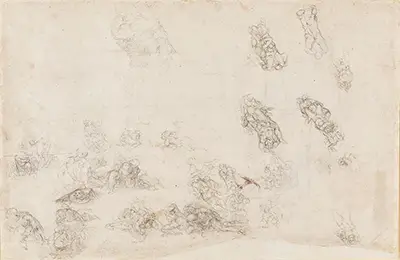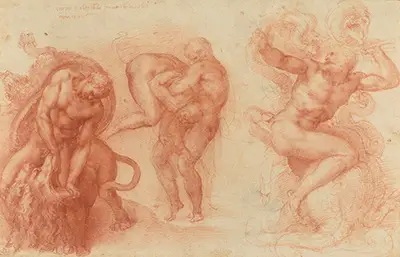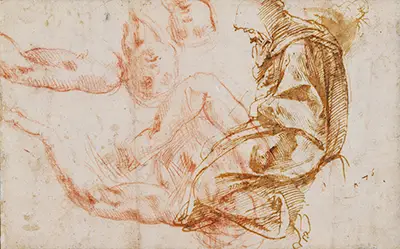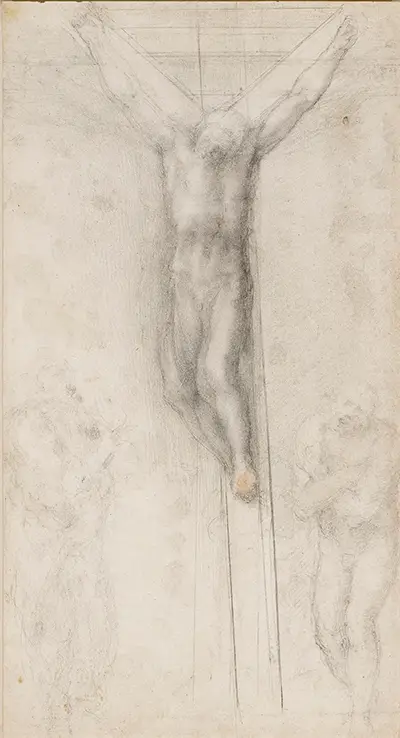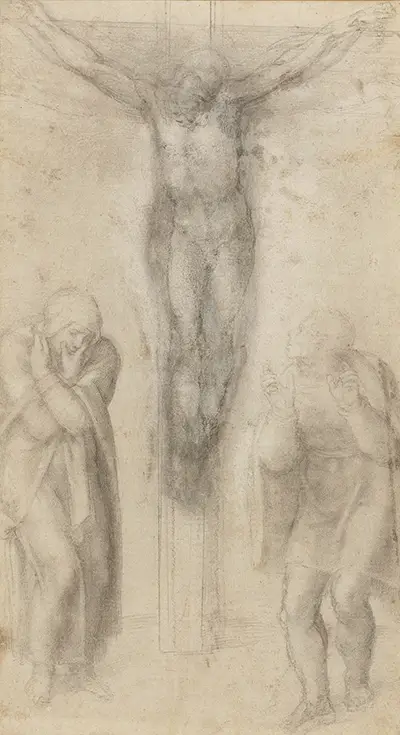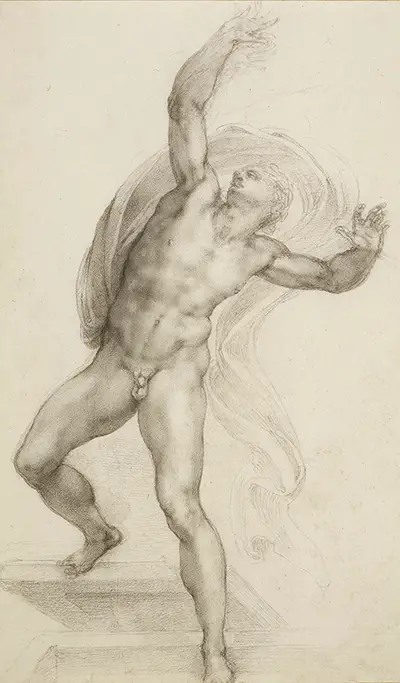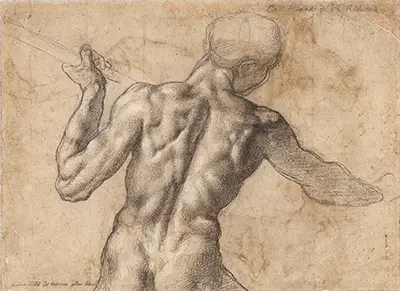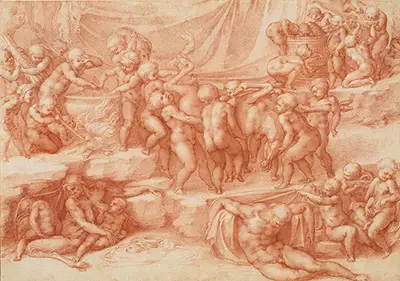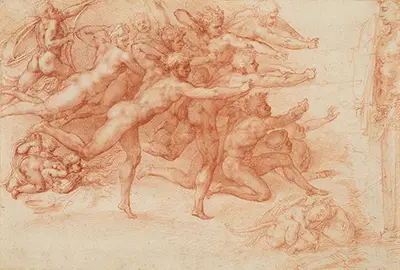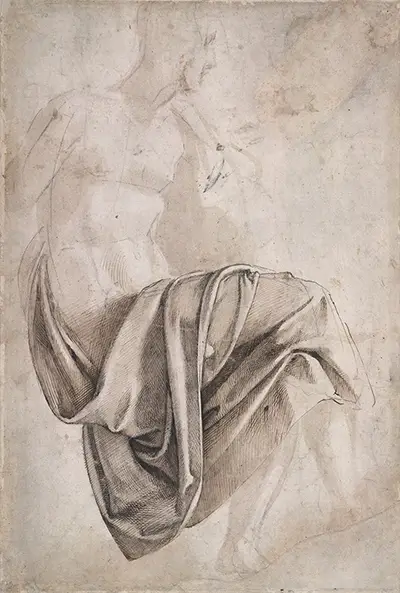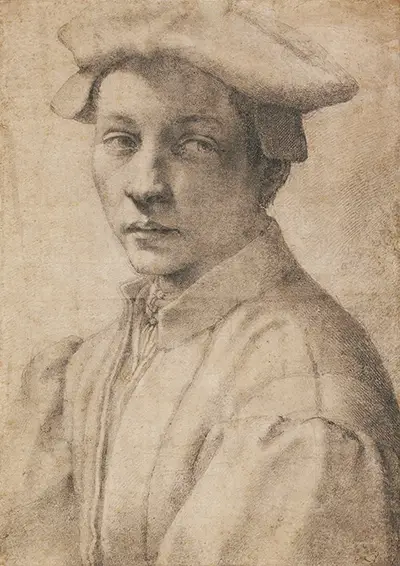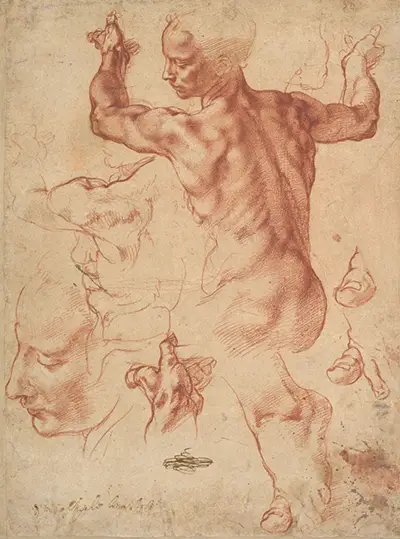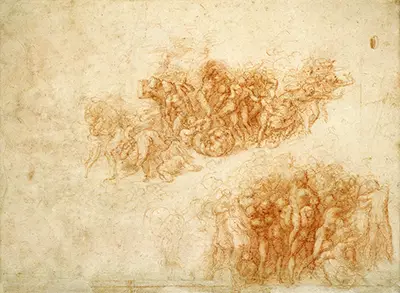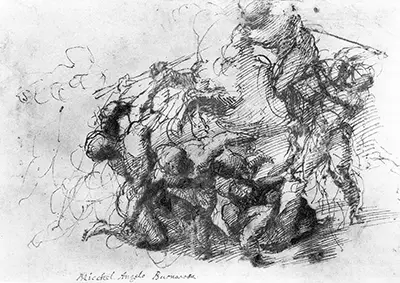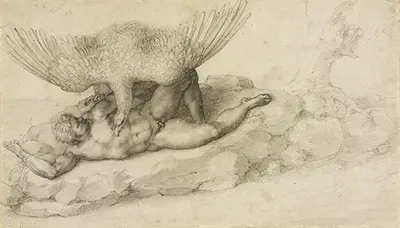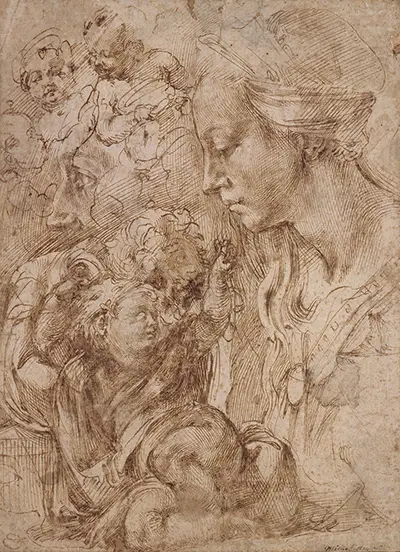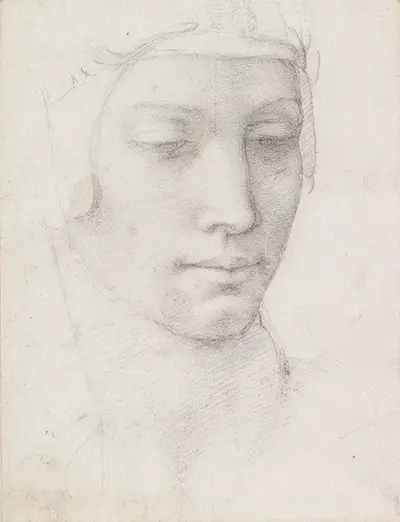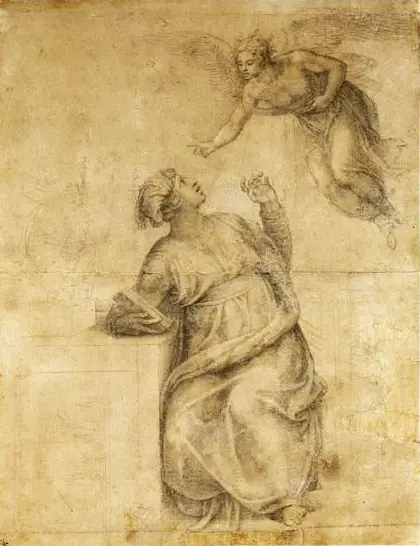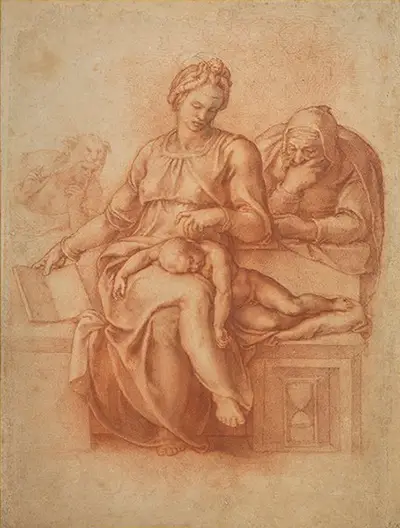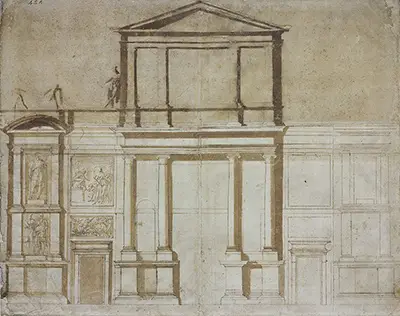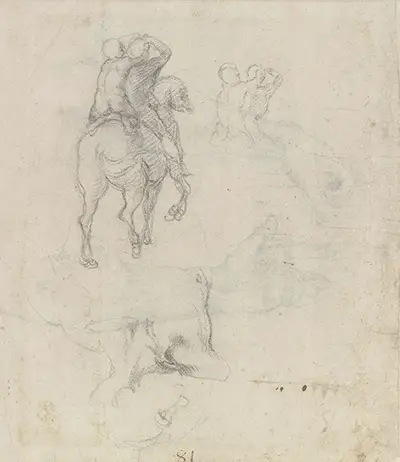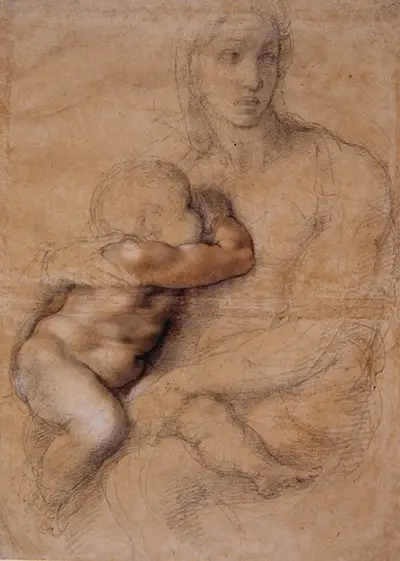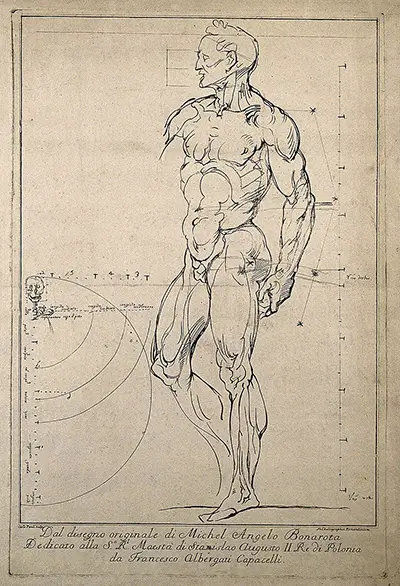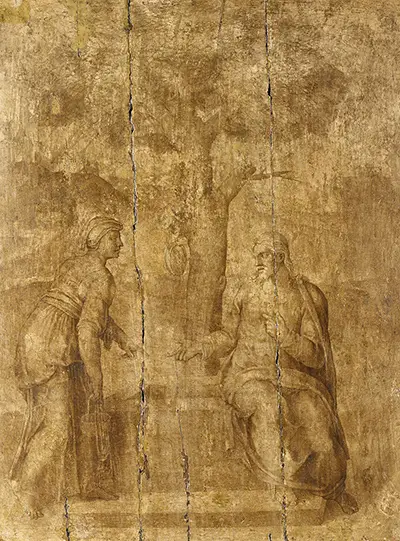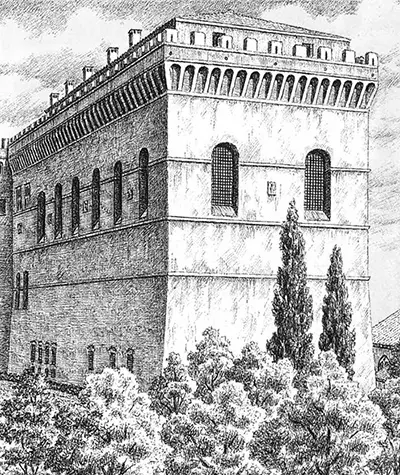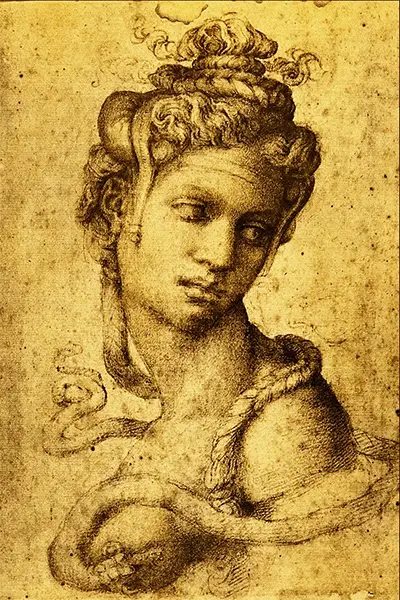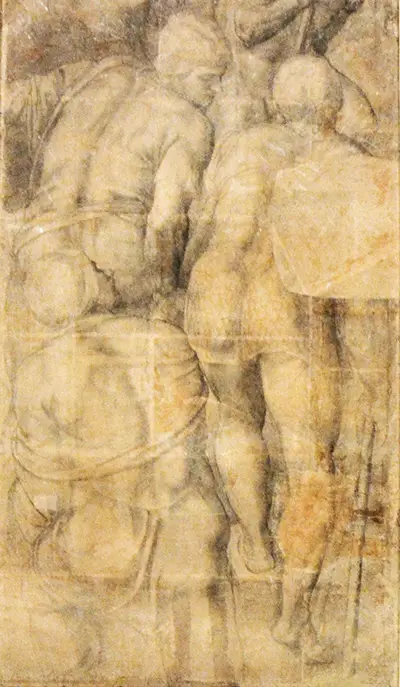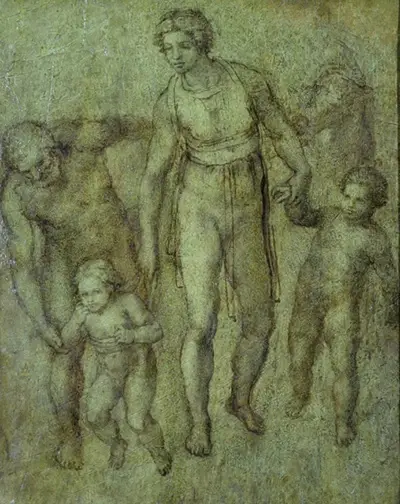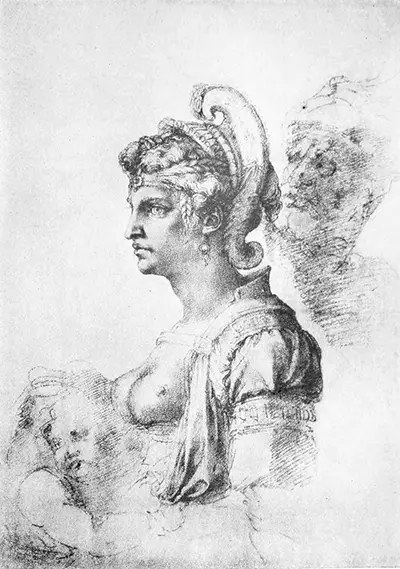Whether it be an elaborate fresco, a detailed architectural plan or a study piece for a future sculpture, drawings would always be Michelangelo's first port of call. Such sketches are therefore a link between his breadth of work and many stand out as fine art in their own right. They also provide clear examples of the amount of preparation used by Michelangelo for most of his larger commissions. In some cases the artist would address individual elements of an overall composition within a preparatory sketch. Often, this would involve a single figure that Michelangelo would use to practice his anatomical details. Models may be used in order to capture a natural looking finish, be it from the contours of muscles or perhaps the way in which someone might twist during an animated scene.
There are Michelangelo drawings here which may appear unfinished. In reality, the artist reached a point with each where each had served its purpose and he could move on to producing the main work. Artist Michelangelo did occasionally take his drawings into finer detail and go beyond just study practice. These completed sketches featured stunning complexities and would often be gifted to friends and colleagues. Il Divino (the divine one) created a series of drawings for his friend Tommaso de' Cavalieri. There was also a substantial cartoon for a fresco in the Vatican Palace. All of these items were recently featured in a high profile exhibition at the Metropolitan Museum of Art, New York having been loaned by the Ashmolean Museum in Oxford, UK.
This fine institution also holds a collection of Raphael drawings and the Michelangelo drawings can be viewed in the Western Art Print Room by prior appointment in order to ensure their safe preservation. The versatility of this medium allows artists to make continual changes and amendments to their composition prior to moving on to the final artwork. Adjusting a figure's pose, for example, is infinitely easier to achieve when using chalk or pencil on paper. Even pen would be preferable to amending a fresco directly at a later date. Many of his paintings would also be highly complex, with any change also impacting other neightbouring parts of the canvas. The drawings found in this section serve another purpose, beyond just being enjoyable artworks for followers of the Renaissance to enjoy. There are countless examples from art history of famous names learning new techniques by collecting and studying the work of others. Those unable to get hold of any of Michelangelo's sketches over the past few centuries would then need to visit his work in person an study it that way.
Durer's Praying Hands is considered by some to be the finest and most recognisable artwork in this medium, across all art movements. That would certainly be the case within his native Germany, but globally one could argue that it is actually Da Vinci's Vitruvian Man. A fabulous revelation which truly helps to draw Michelangelo's career towards artists of the modern day is that many of the techniques and media that he used at that time are still used by draughtsman today. Pen, ink, charcoal and chalk were his tools of choice, and are still the same for many all these centuries later. Drawing was an essential skill towards being considered a genuine master during the Renaissance, particularly so in the papal states of Italy. Some other countries, such as Spain, were a little more relaxed about whether a painter could be considered of a good standard if he was unable to replicate his work in the medium of drawing. Diego Velazquez was famously taught the Italian way, despite being from the Spanish Renaissance, however.
Most of the artist's work relied on his exceptional drawing skils, which provided the backbone to many architectural designs, frescos and plans for sculptures. Michelangelo's drawing skills were also called on several times by inventors who needed to portray their ideas in as professional a way as possible, to help in getting investment to make each product come to fruition. There are hundreds of study sketches remaining from preparatory work for all manner of projects, and the technical qualities found within them make them stunning artworks in their own right.
In recent years there has been a growing interest in the core technical skills of the Renaissance masters such as Michelangelo and Leonardo da Vinci, with frequent exhibitions concentrating solely on collections of their drawings from across their careers. The beauty of these sketches is in the way that they highlight the fundamental, core skills possessed by the artists which may not be so obvious when paint, marble or other mediums are added later on as those projects develop.
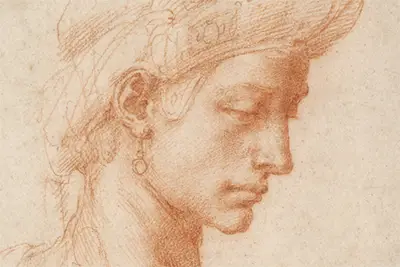
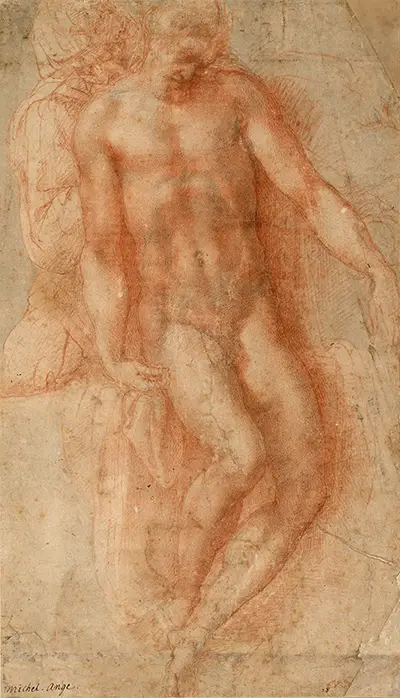
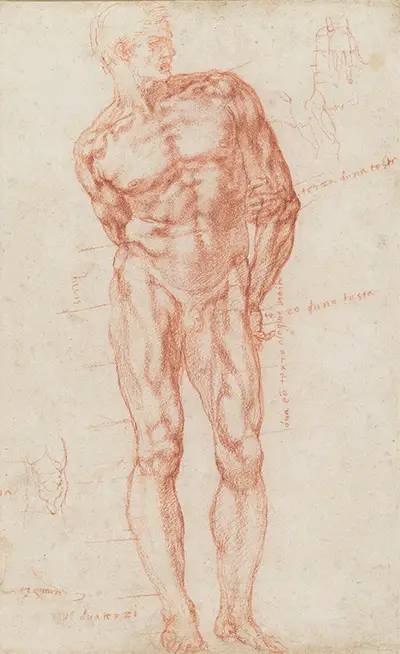
 for Tomb of Pope Julius II Michelangelo.jpg)
